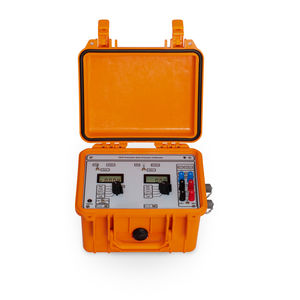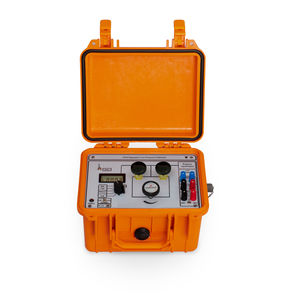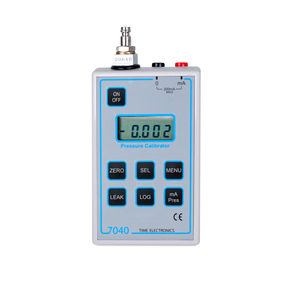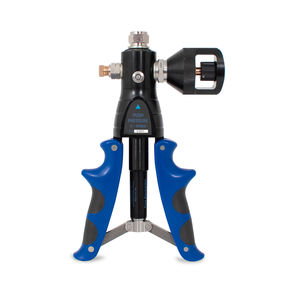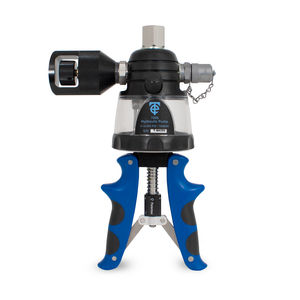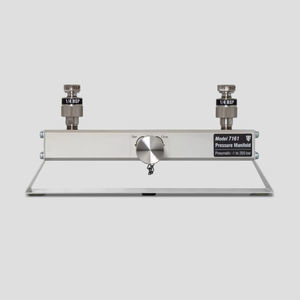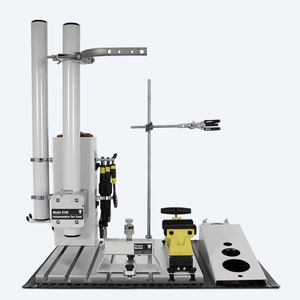
Purge and trap system 7115






Add to favorites
Compare this product
Description
The 7115 is a contamination trap designed for use with pressure equipment, such as controllers, calibrators and pressure generators. It protects against impurities, liquids (water, oil etc.) and residues released by manifolds, gauges, transmitters and other pressure instrumentation under test. The 7115 is primarily intended for use with the 8030 pressure controller and equivalent 8030B CalBench module. It is supplied as standard with both units. The trap provides a level of protection for the controller's internal system components that require mechanical operation to be smooth and unobstructed.
During pressure testing applications, a controller or calibrator will transition from a higher set point to a lower one. At this time, liquid and residues present in the pneumatic system may flow into the controller/calibrator. This may also occur when selecting negative set points (vacuum). The 7115 is required to filter out contaminants.
Set up is simple and fast, with the trap connected between the controller/ calibrator and the unit under test. The top of the trap indicates the clean side (controller) and the UUT side. The unit is pressure rated from vacuum to 210 bar operation with two high pressure minimess type fittings for connections. Hoses are supplied as standard. It is also suitable for use with calibration manifolds such as the 7161 dual port pneumatic model.
Features
• Protection for calibrators & controllers
• Supplied with 8030 pressure controller
• For -1 to 210 bar (3000 psi) pressure
• Pneumatic use only, gas or air
• Stainless steel, polycarbonate chamber
• Minimess high pressure type fittings
Catalogs
Pressure Calibration Instruments
10 Pages
CalBench Catalogue 2022
80 Pages
Related Searches
*Prices are pre-tax. They exclude delivery charges and customs duties and do not include additional charges for installation or activation options. Prices are indicative only and may vary by country, with changes to the cost of raw materials and exchange rates.







